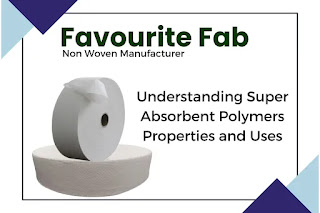What is the raw material for non woven fabric
Non-woven fabric is widely used across various industries, from healthcare to packaging and automotive. Unlike traditional woven textiles, non-woven fabric is made by bonding fibers together using chemical, mechanical, or thermal processes. But what are the raw materials that make up non-woven fabric? This blog explores the primary raw materials, their properties, and their applications.
Primary Raw Materials for Non-Woven Fabric
1. Polypropylene (PP)
Properties:
Lightweight and durable
Water-resistant and breathable
Cost-effective and recyclable
Applications:
Medical masks and gowns
Shopping and packaging bags
Hygiene products like diapers and wipes
2. Polyethylene (PE)
Properties:
Soft and flexible
High chemical resistance
Waterproof
Applications:
Protective clothing
Coatings for hygiene products
Disposable tablecloths and covers
3. Polyester (PET)
Properties:
Strong and durable
High temperature resistance
Excellent filtration properties
Applications:
Geotextiles and filtration materials
Automotive insulation
Industrial wipes and cleaning cloths
4. Rayon (Viscose)
Properties:
Soft and absorbent
Biodegradable
Skin-friendly
Applications:
Medical and hygiene products
Cosmetic wipes and facial tissues
Eco-friendly disposable fabrics
5. Natural Fibers (Cotton, Wool, Bamboo, etc.)
Properties:
Biodegradable and eco-friendly
High absorbency
Breathable and comfortable
Applications:
Sustainable hygiene products
Biodegradable non-woven bags
Luxury wipes and beauty products
How Raw Materials Impact Non-Woven Fabric Performance
The choice of raw material significantly affects the properties of non-woven fabric, including:
Strength and Durability: Polypropylene and polyester provide excellent tensile strength.
Softness and Comfort: Rayon and cotton ensure a soft and skin-friendly texture.
Water Resistance: Polyethylene and polypropylene are excellent water-repellent options.
Eco-Friendliness: Natural fibers and biodegradable materials help reduce environmental impact.
Conclusion
Non-woven fabrics are crafted using various raw materials, each offering unique properties suited for different applications. Whether you need durability, softness, or eco-friendliness, choosing the right raw material is essential. If you're looking for high-quality non-woven fabric raw materials, connect with Favourite Fab, a trusted supplier of premium non-woven materials tailored to your needs.
https://favouritehub.com/what-is-the-raw-material-for-non-woven-fabric/




Comments
Post a Comment